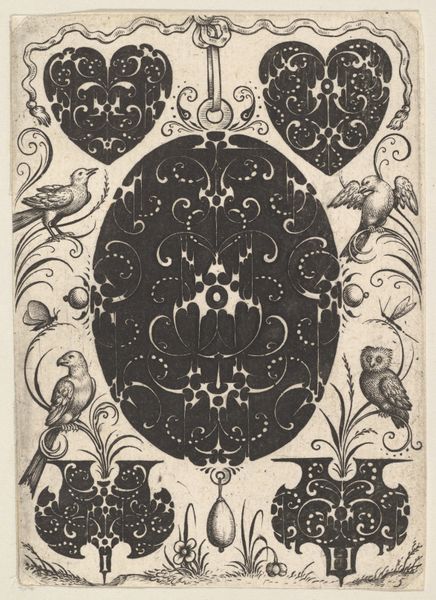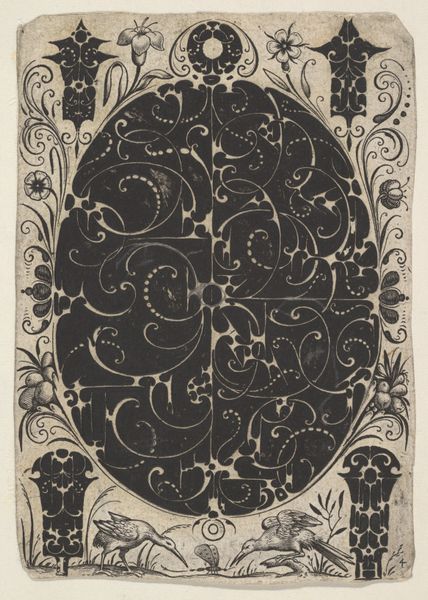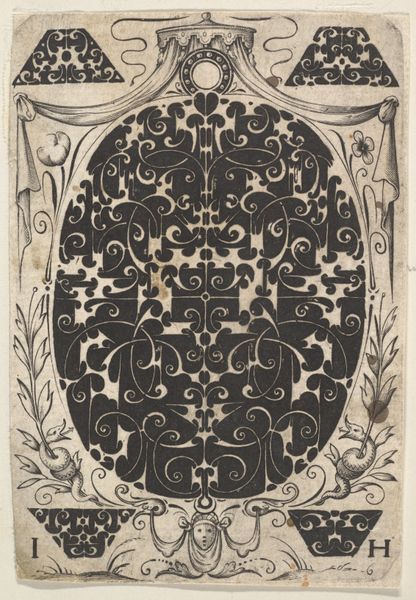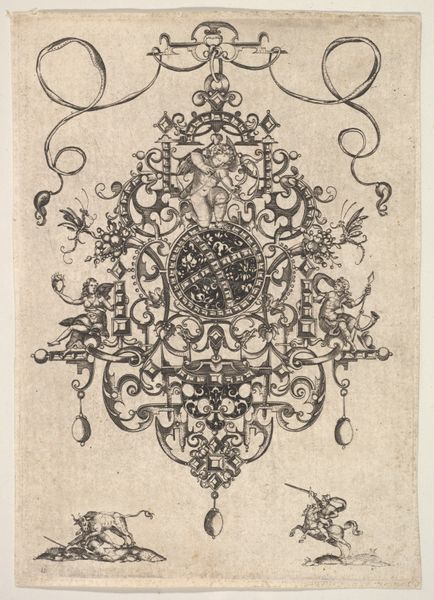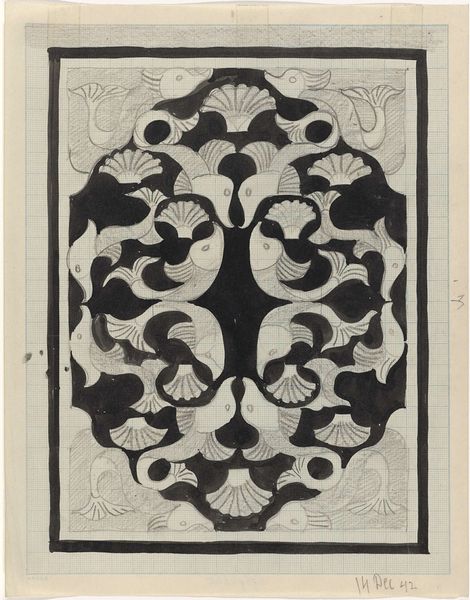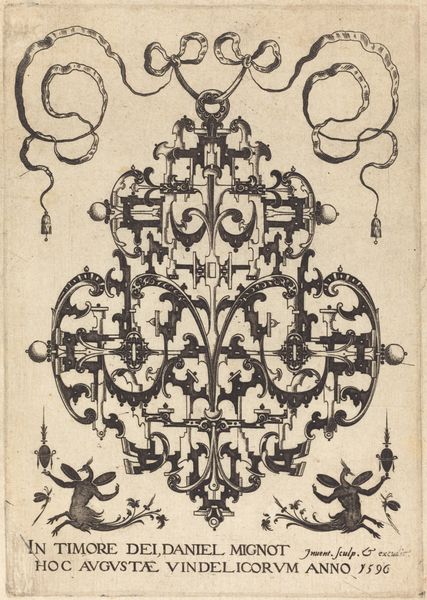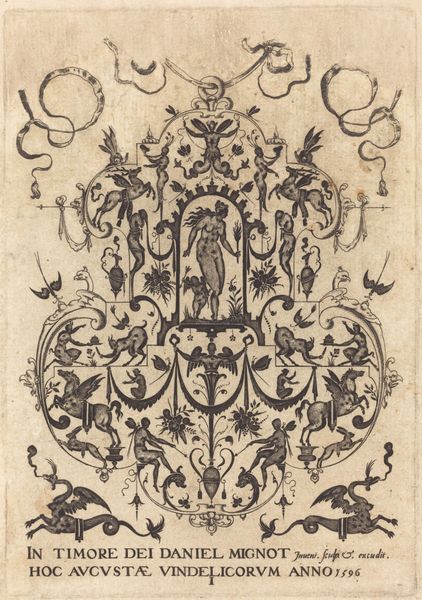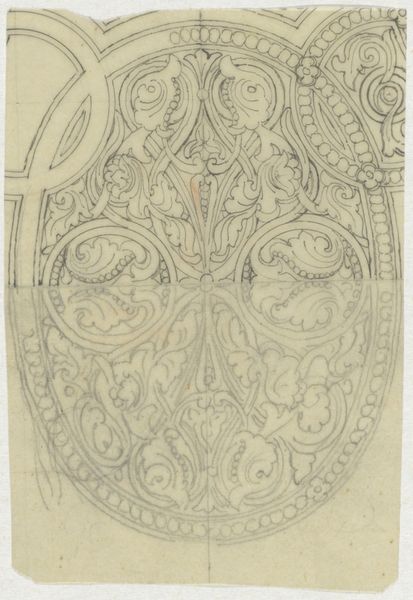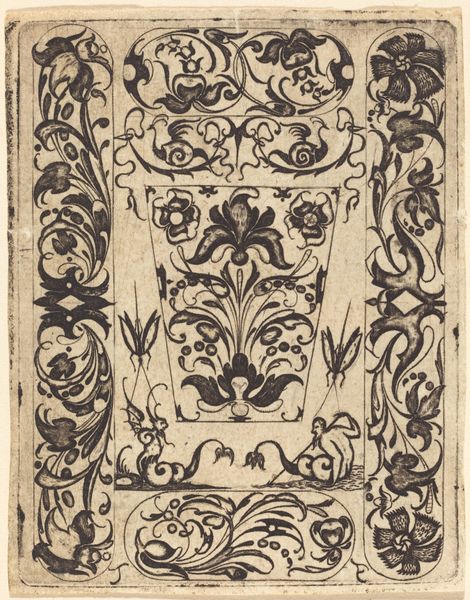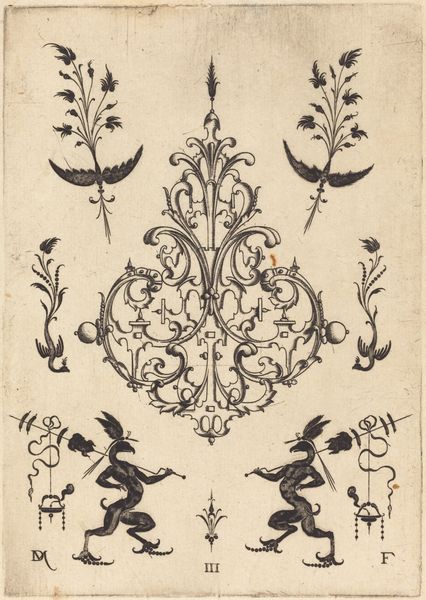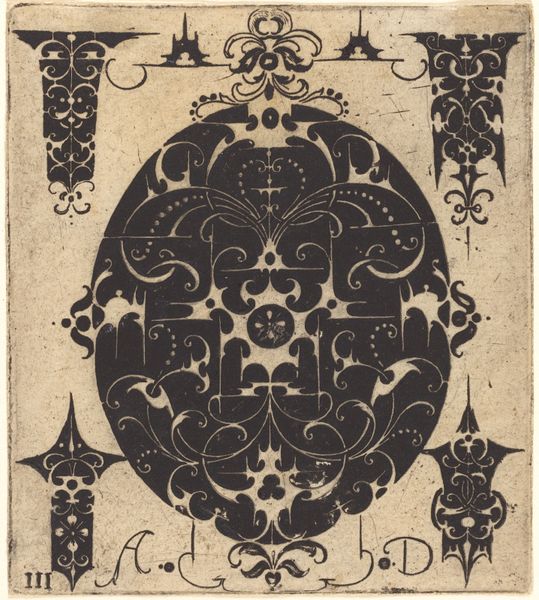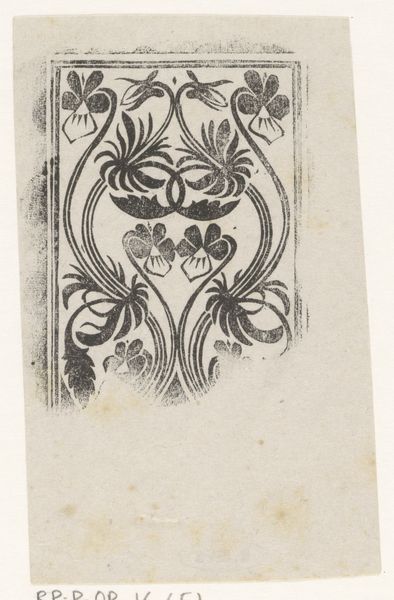
Blackwork Print with Foliate Scrolls in an Oval at Center, from a Series of Blackwork Prints for Goldsmiths' Work 1615
0:00
0:00
drawing, print, paper, ink, engraving
#
drawing
#
pen drawing
# print
#
paper
#
ink
#
geometric
#
engraving
Dimensions: Sheet: 4 7/8 × 3 1/2 in. (12.4 × 8.9 cm)
Copyright: Public Domain
Curator: Here we have an engraving from 1615. It's titled "Blackwork Print with Foliate Scrolls in an Oval at Center, from a Series of Blackwork Prints for Goldsmiths' Work." It resides here at the Metropolitan Museum of Art. Editor: Wow. That’s a mouthful! My immediate impression is a rather formal garden but reduced to a monochromatic maze of sorts. Is it trying to escape its own frame? Curator: The formal aspect is critical. Notice how the dense foliate patterns are meticulously organized. We have the central oval form with symmetrical flourishes above and flanking it. Its aesthetic impact is derived from order and the sophisticated repetition of botanical motifs. Editor: Okay, but order can be playful too! To me, this doesn’t feel rigid or academic. Look how those vines writhe and curve. They almost seem to giggle. What purpose did something like this serve? It is more than just eye-candy for old-timey gold makers, right? Curator: Indeed. These blackwork prints served as models for intricate designs, specifically for goldsmiths. The intention was that skilled artisans would directly translate these patterns into metalwork. The piece explores what we now call 'information architecture' that moves towards generative outcomes, so while appearing ornamental, each stroke delineates functional guidelines. Editor: Generative, eh? You're totally right to draw out how practical this print really is, but I can't shake this funny sensation that there's just one extra tendril—one cheeky loop of vine—that doesn't *quite* need to be there. Almost like a signature, perhaps an artist just poking at his own work? Curator: An intriguing point. What we may view as an intentional flourish could also be an artifact of the engraving process, reflecting the challenges of the medium. Every line, no matter how whimsical it appears to our modern eye, adheres to principles embedded in formal composition. Editor: Maybe the artist included that extra tendril so we could keep talking about it for hundreds of years? Whether intentional or not, the ambiguity of these botanical forms adds layers of character that, in the end, humanizes something intended to appear both rigidly utilitarian and ornamental. It has a rather beautiful vulnerability to it! Curator: An inspired note. The engraving operates on multiple levels, and our interpretations underscore its enduring value, as a design model but equally as a testament to the artist's skill in reconciling constraint and innovation.
Comments
No comments
Be the first to comment and join the conversation on the ultimate creative platform.
